In spite of my original plan to visit downtown Bratislava, I was feeling rather run-down from getting a mere four hours of sleep in a hostel. I opted instead to get out of dodge, book a private room last-minute and head out early on my journey northward.
My first stop was Čachtický hrad, a ruined castle about an hour north of Bratislava.
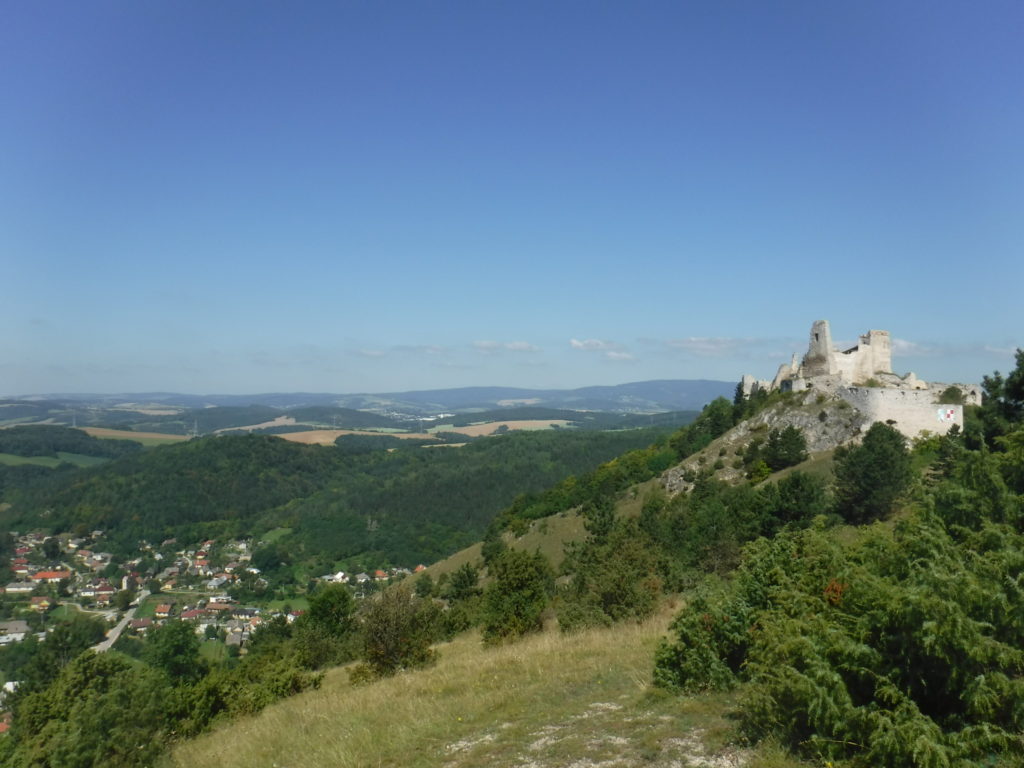
The castle overlooking the town
Although the castle is just a shell now, it still attracts many locals and nearby tourists, and includes an informative exhibit about the history of the castle and its occupants. The guided tours were only offered in Slovak, however, so I made do with the Spanish translation on a sheet of paper.
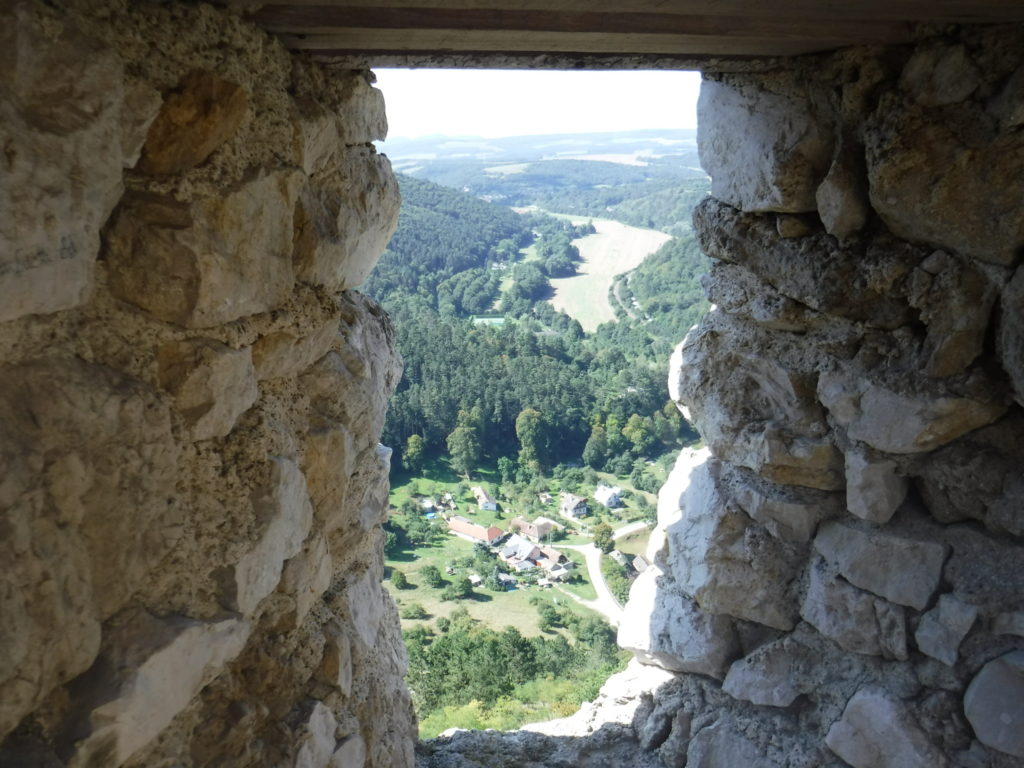
Archer’s window


The most famous occupant of the castle was the Hungarian Countess Elizabeth Báthory, who, along with her husband Ferenc Nádasdy, owned a great deal of property in 16th-17th century Hungary. The castle was a wedding gift to Elizabeth from Ferenc. Elizabeth Báthory is perhaps best known as the most prolific female serial killer, having been accused of murdering hundreds of girls. Tales of her bathing in their blood became a part of local legend, and she is often now compared to Vlad the Impaler.
Although she was found guilty, due to the political implications of executing a powerful and influential noble, Elizabeth was placed under house arrest in Čachtický hrad, in sealed rooms with only slots through which food could be passed. It was not readily apparent from the ruin which rooms had been hers, but it wasn’t hard to imagine that, at night, her ghost could appear and wander amongst the stones.
After the castle, I ventured north to find my hotel. An originally unplanned turn of events led to an amazing discovery: the resort town of Terchová and the legend of Juraj Jánošík.
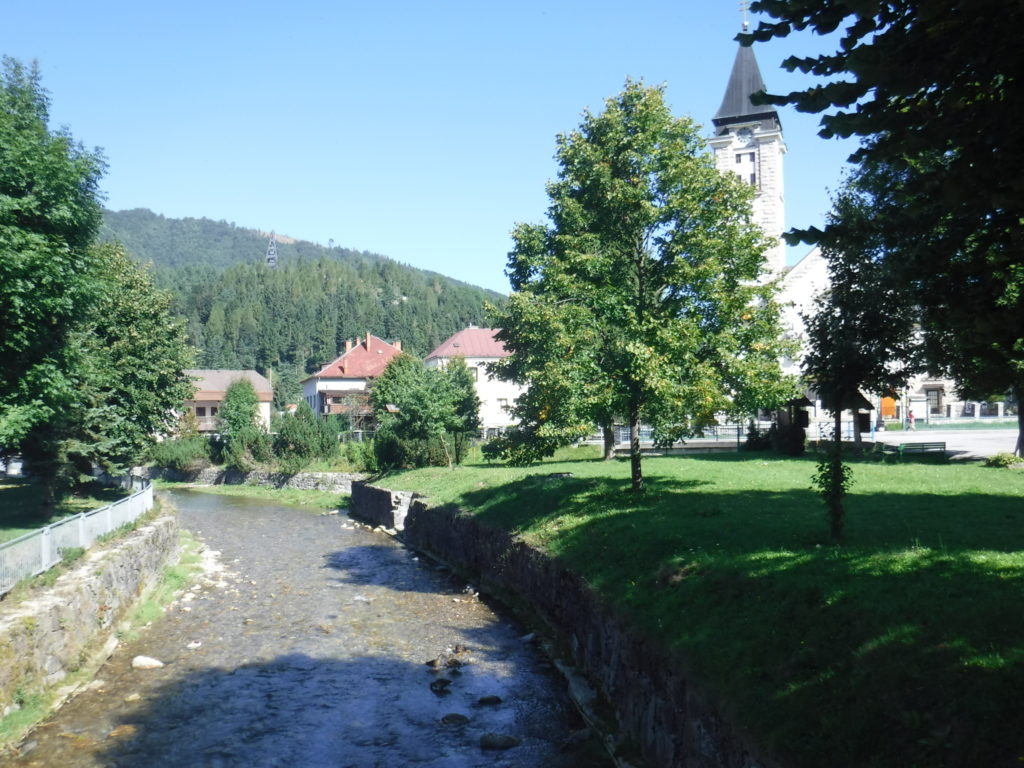
Downtown Terchová
I booked my hotel room last-minute so I had no idea what to expect. After driving through a series of beautiful Slovakian towns, I came to this gem of a resort town. My hotel is a ski resort in winter, within walking distance of the slopes. For the first time on my trip, I felt absolutely elated.
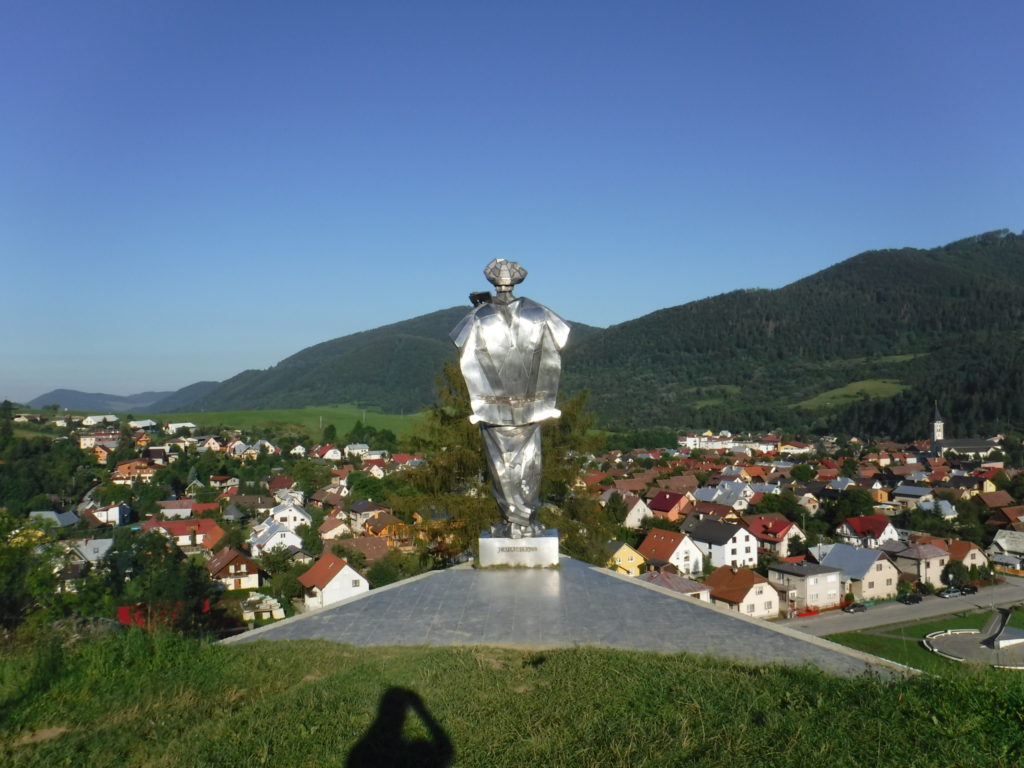
Juraj Jánošík overlooking his birthplace of Terchová
I wandered down from my hotel for dinner to find a restaurant and ordered the special: deer ghoulash. It was as amazing as it sounds. Then I settled in for a long, much-overdue sleep.
The next day I explored the town and discovered the legend of the folk hero Juraj Jánošík at the local museum. The museum included a historic description of Juraj’s life (in English) and an artistic short film about his legend (in Slovak).
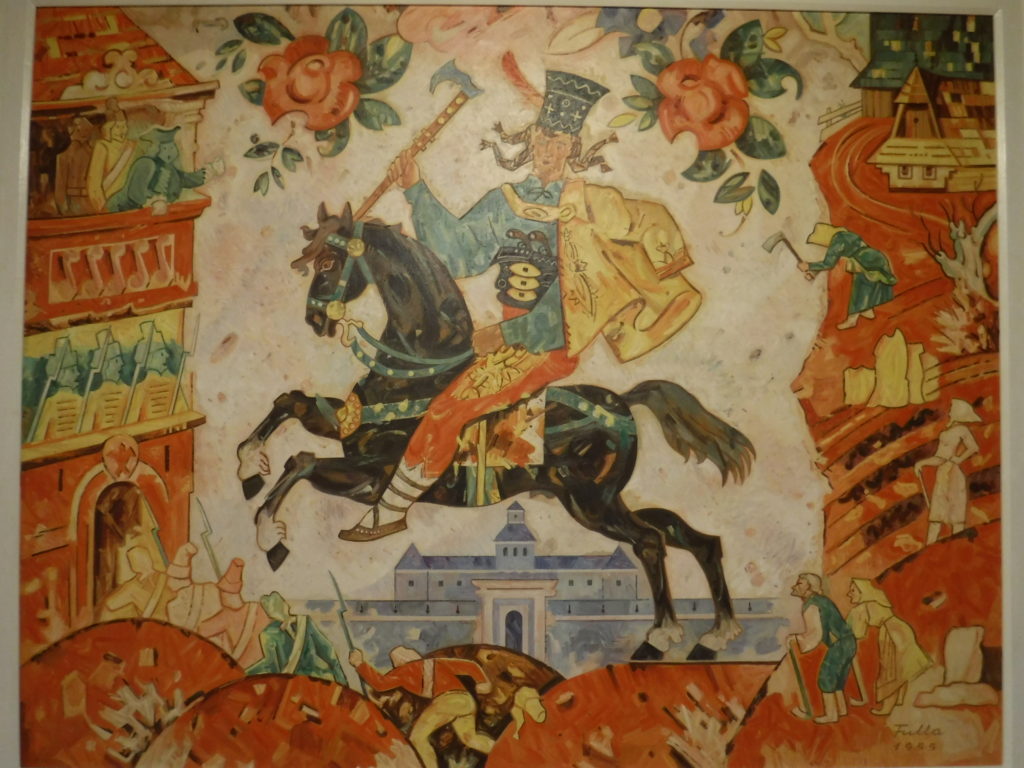
Juraj was born in Terchová and joined the anti-Habsburg rebels at the age of fifteen, in the late seventeenth century. After the insurgents lost, he joined the Habsburg army. However, during his posting as a prison guard, he met a prisoner named Tomáš Uhorčík and helped him escape. Together they formed a band of highwaymen.

Juraj and his highwaymen robbing a merchant
When Tomáš retired to marry, Juraj became the captain of the band. He became something of a Slovakian Robin Hood, reportedly robbing from the rich to give to the poor. His band never killed their targets, either — they simply robbed them and let them leave.
Juraj was eventually captured and executed, reportedly jumping on a hook after performing a traditional dance in a William Wallace-esque expression of freedom. His tale passed into local legend, though this legend has a basis in verifiable history, since there are records of Juraj’s birth and death. He has been immortalized in poetry, song and film innumerable times, and my life is richer for having encountered his story.

Slovak folk instruments
The museum also included an exhibit detailing traditional life in the region. I would have paid several times the entry fee (2 euros!) for the enriching experience.
Tomorrow: my visit to the (paternal) ancestral homeland.
Leave a Reply